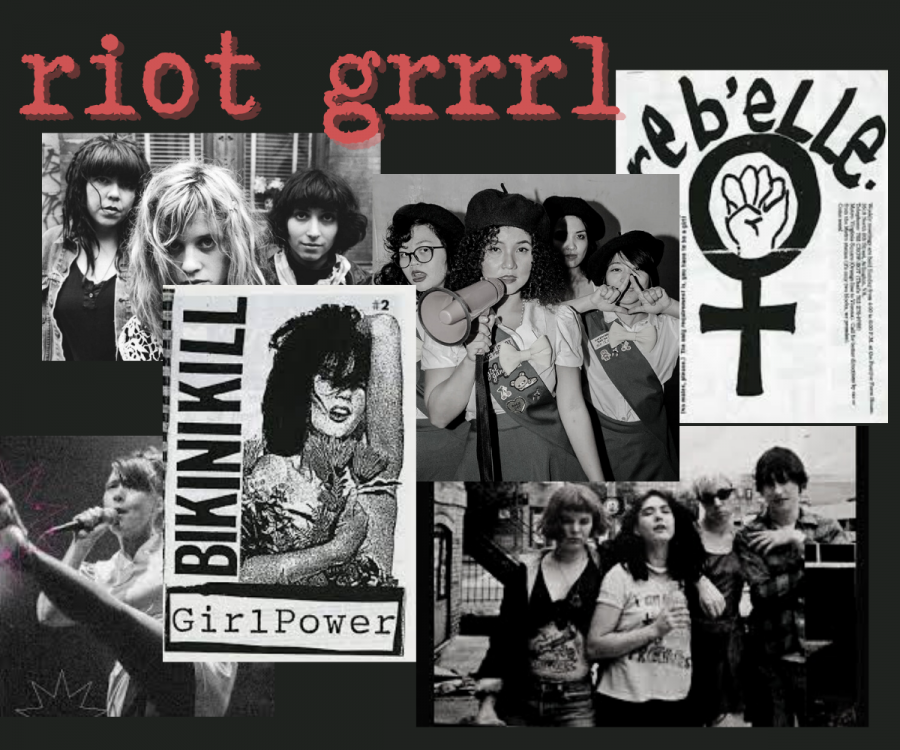Subgenre Studies: Riot Grrrl
BECAUSE we are angry at a society that tells us Girl = Dumb, Girl = Bad, Girl = Weak.
The ‘90s were full of many post–punk genres and experimentation: grunge music being one of the most prevalent. Between the fashion looks of combat boots paired with flannel, and the sounds of Soundgarden, Alice in Chains, Nirvana, and countless others, the Seattle-born genre is still heavily attached to the ‘90s. Not too far away from Seattle was another movement, charged full of energy and desire for recognition. From the minds of Kathleen Hanna and Toby Vail, “Riot Grrrl” was born.
At the height of the punk rock era, female erasure was common. Femininity was commonly mocked, and many girls received misogynistic remarks and exclusion from a movement that was supposed to be countering the patriarchal culture that was already cemented in society.
Kathleen Hanna, Billy Karen, Kathy Wilcox and Toby Vail all formed Bikini Kill after having two separate indie zines talking about this issue. This is the unofficial start of the musical genre of Riot Grrrl.
The main goal of this music was to empower women, simply put. The girls wanted the music to be punk, raw, angry and full of feminism. The catchphrase “Girls To The Front” became one of the most popular things to hear at their live performances.
They created the Riot Grrrl Manifesto in the Bikini Kill zine after their music career kicked off, and it only became more popular from there. This excerpt is just a portion of what the publication released.
“BECAUSE we wanna make it easier for girls to see/hear each other’s work so that we can share strategies and criticize-applaud each other.
BECAUSE we must take over the means of production in order to create our own meanings.
BECAUSE viewing our work as being connected to our girlfriends-politics-real lives is essential if we are gonna figure out how we are doing impacts, reflects, perpetuates, or DISRUPTS the status quo.
BECAUSE we recognize fantasies of Instant Macho Gun Revolution as impractical lies meant to keep us simply dreaming instead of becoming our dreams AND THUS seek to create revolution in our own lives every single day by envisioning and creating alternatives to the bullshit christian capitalist way of doing things.
BECAUSE doing/reading/seeing/hearing cool things that validate and challenge us can help us gain the strength and sense of community that we need in order to figure out how bullshit like racism, able-bodieism, ageism, speciesism, classism, thinism, sexism, antisemitism and heterosexism figures in our own lives.”
The “Riot Grrrl” movement started an open conversation in the punk community, and it opened a conversation for sexual harassment to be taken seriously.
After the Manifesto, similar bands jumped on board and were established as “Riot Grrrl.” Bratmobile, Calamity Jane, Sleater Kinny and Le Tigre are just a few names to mention. In 1991, K Records hosted a punk festival in Olympia with International Pop Underground Conventions called “Love Rock Revolution Girl Style Now,” featuring an all-girl lineup
It was coined in the media that Riot Grrrl was just a bunch of suburban white girls who were throwing a temper tantrum. And although these women were serious in their message, the girls that were recognized as the center of the movement were all white. Tamar-kali Brown created her own band and in 1997 helped create a show called “Sista Grrrl Riots”. Black women didn’t feel like they fit into the movement of Riot Grrrl and Brown wanted to counteract that.
After its peak, Olympia adopted a new convention “Ladyfest” that started in 2000 and has been an annual all-girl lineup ever since.
Nowadays, women in punk are simply commonplace. There is no stigma in the community about women having a place in the mosh pit or going to punk establishments. “Riot Grrrl” was able to make women feel safe and comfortable in the music world.
The movement still lives on today, and in March of this year, Moxie, a movie about sexism in teen high schools, was released. It featured many prominent “Riot Grrrl” themes including zines and music used in the era.


